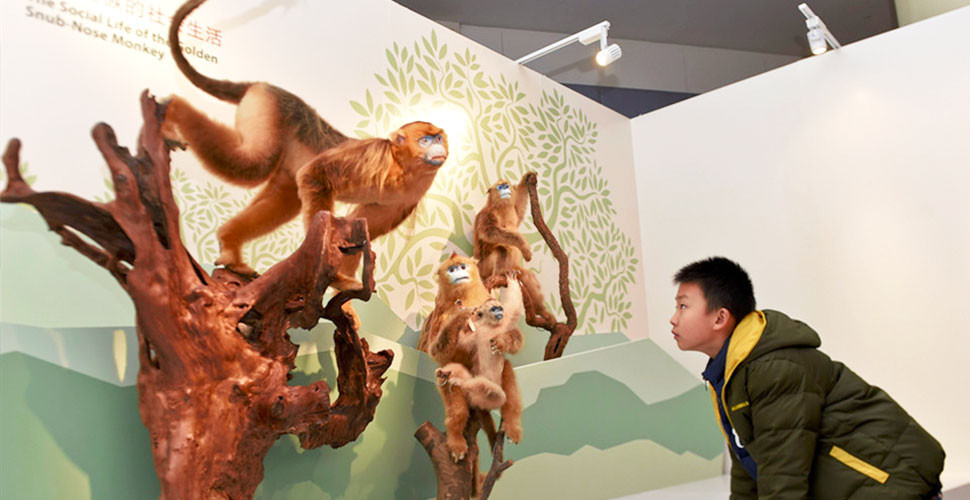Special Exhibition for the Year of the Monkey
A Special Exhibition for the Year of the Monkey was unveiled at the
Temporary Exhibition Hall on the second floor of SSTM on January 15,
2016.
We human beings were very close to apes, Darwin once said.
About 7 million years ago, the ancestors of Africans were divided and
formed in chimpanzees, gorillas and human beings. The biological and
mental characteristics of human beings are consistent with other
non-human primates, and the research on apes is an important way to
explore the origins of human beings. The exhibition focused on a serious
subject to explore the origins of the beastliness of human beings
through the analysis of the action and psychology of apes, and reveal
the secrets of human beings during their evolution, e.g. why apes smile?
Do monkeys have culture? What is the connection between the action of
apes and human beings?

The
exhibition displayed specimens of more than 20 types of apes. Among
them, visitors could see New World monkeys from South and Central
America, and Old World monkeys, including rhesus monkey, mandrill, papio
and guenon.Visitors had the opportunity to see golden monkeys, the most
beautiful monkey in the world. And there was a mirror on the specimen
table, on which was a tag: “Human (Homosapiens), no danger.”
The
exhibition organizer also prepared abundant learning resources and
educational activities for visitors, e.g. serial pictures of primates on
mobile phones, the Ape Legend special website, and science
popularization lectures. Reservations for some programs had to be made
in advance.






